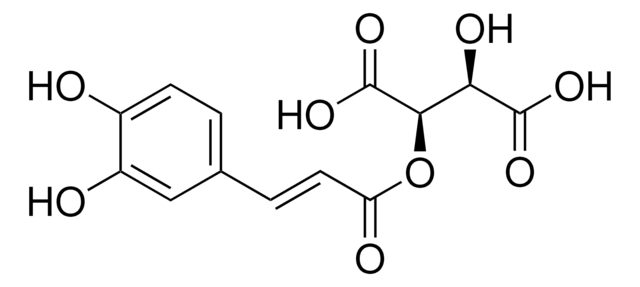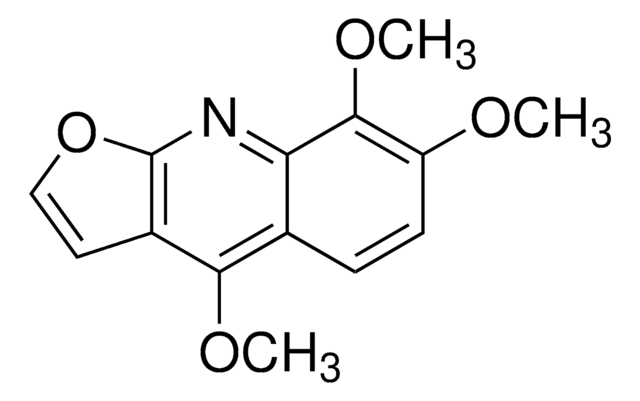C8221
Caffeic acid phenethyl ester
≥97% (HPLC), powder
Sinonimo/i:
CAPE
About This Item
Prodotti consigliati
Origine biologica
synthetic
Saggio
≥97% (HPLC)
Stato
powder
Condizioni di stoccaggio
protect from light
Colore
off-white
Solubilità
ethyl acetate: 50 mg/mL
DMSO: soluble
ethanol: soluble
Temperatura di conservazione
−20°C
Stringa SMILE
Oc1ccc(\C=C\C(=O)OCCc2ccccc2)cc1O
InChI
1S/C17H16O4/c18-15-8-6-14(12-16(15)19)7-9-17(20)21-11-10-13-4-2-1-3-5-13/h1-9,12,18-19H,10-11H2/b9-7+
SWUARLUWKZWEBQ-VQHVLOKHSA-N
Informazioni sul gene
human ... NFKB2(4791)
Applicazioni
Azioni biochim/fisiol
Caratteristiche e vantaggi
Codice della classe di stoccaggio
11 - Combustible Solids
Classe di pericolosità dell'acqua (WGK)
WGK 3
Punto d’infiammabilità (°F)
Not applicable
Punto d’infiammabilità (°C)
Not applicable
Dispositivi di protezione individuale
dust mask type N95 (US), Eyeshields, Gloves
Scegli una delle versioni più recenti:
Possiedi già questo prodotto?
I documenti relativi ai prodotti acquistati recentemente sono disponibili nell’Archivio dei documenti.
I clienti hanno visto anche
Articoli
Chronic inflammation is an underlying factor in the development and progression of many of the chronic diseases of aging, such as arthritis, atherosclerosis, diabetes, and cancer.
We offer a variety of small molecule research tools, such as transcription factor modulators, inhibitors of chromatin modifying enzymes, and agonists/antagonists for target identification and validation in gene regulation research; a selection of these research tools is shown below.
Il team dei nostri ricercatori vanta grande esperienza in tutte le aree della ricerca quali Life Science, scienza dei materiali, sintesi chimica, cromatografia, discipline analitiche, ecc..
Contatta l'Assistenza Tecnica.










